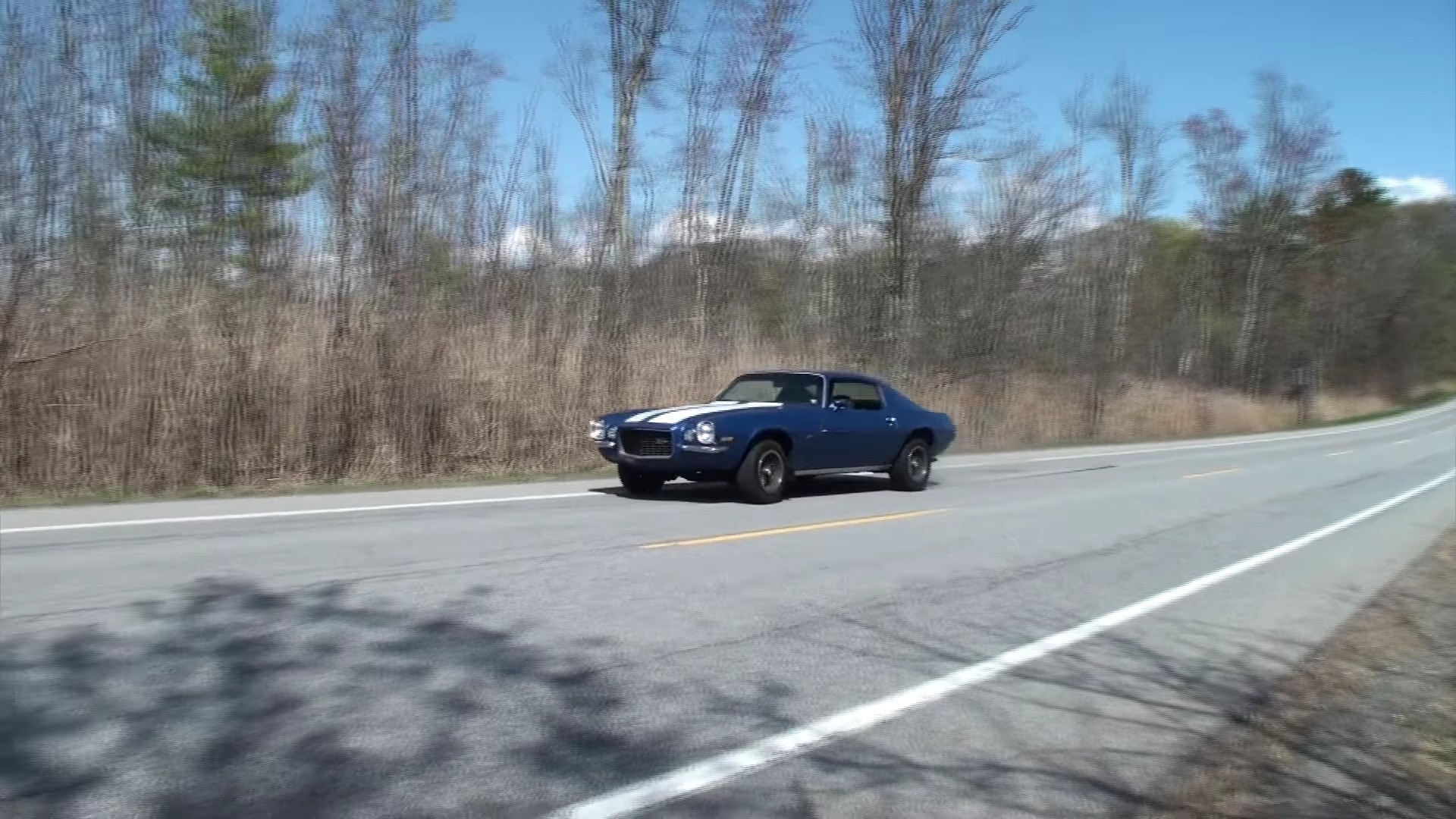December 31, 1970, is a day that will go down in the history of the automotive universe. It was the beginning of the end of the Golden Age of American motoring. President Richard Nixon signed into law the first Amendment to the Clean Air Act on that date. That initiative effectively capped the muscle car phenomenon over the next two years. But 1970 also offered several other piston-intense events.
One of the most important was the launch of the HEMI ‘Cuda. Another was the termination of the Boss Fords. The list could go on, but one significant occurrence would be the launch of the second generation of Camaros.
For some peculiar reason, the continuation of the Chevrolet pony car ditched the convertible body style. It relied solely on the two-door coupe design to keep the flame burning. GM engineers knew well that taking away the open-top fun wouldn’t stir a stampede of buyers into their showrooms. Consequently, they compensated with mechanical goodies.

The Hugger Camaro was born with – a lower stance, larger body, better handling, and improved economy. As the performance went, the previously mentioned federal emissions regulations weren’t favoring odds. The wrench-turners from Chevrolet gave it their best shot, even under adverse conditions.
Because the Nixon-amended Clean Air Act of 1970 imposed a 95% cut in engine emissions within a five-year time frame, carmakers sledgehammered the elephant in the engine bay. The powerplants got gutted big time. First, the compression ratios were lowered to accommodate low-leaded and unleaded gasoline.
GM already imposed a 9.0:1 maximum compression ratio for all its models assembled after 01-01-1971. As a result, performance went south. The impression was further accentuated by another law-makers’ addendum: performance ratings switched from SAE gross to SAE net.
All these put together resulted in sales brochures advertising a 1971 Chevrolet Camaro Z28 with 275 net horsepower and 300 lb-ft net torque. 279 PS and 407 Nm from “the closest thing to a ‘Vette” wasn’t exactly impressive. For the 350-CID (5.7-liter) Turbo-Fire V8, the downsizing was the piston equivalent of a dishonorable discharge after the decade-long arms race for ever-increasing horsepower.

That’s probably why only 4,862 race-ready Camaros left the assembly lines from Norwood, Ohio, and Van Nuys, California, for the 1971 model year. To add to the misery, the debut of the second generation was drowned in agonizing doubt because of the historic GM strikes of ’69 and ’70.
The longest strike in General Motors’ history debuted on September 24, 1969, at the Flint, Michigan, Fisher body plant. Work would resume 136 days later, on February 25, 1970. The 1970 Camaro arrived late, and it was short-lived. For this matter, it is sometimes referred to as the “1970-and-a-half” model.
The ’71 model debuted under even more austere auspices as a second (and tidal) wave of strikes crippled production. On September 15, 1971, 400,000 members of the United Automobile Workers from 145 GM facilities walked out. It cost GM – one of (if not) the biggest corporations in the world at the time – a billion dollars, and it seriously shook the American economy.
However, among the less than 5,000 Z28 Camaros assembled during that troublesome year, one raises some questions. Play the first video – authored by Lou Costabile, a veritable classic car hound lately, judging by his YouTubing proficiency – and see if you can spot the inconsistencies.

The owner – who happens to be a major gearhead (watch the second video to see his collection) – claims that the car is an “all original numbers-matching survivor” from 1970 ½. That would be inconsistency number one, as the trim tag reveals a build date of very late (fifth week) April of 1971.
Then there’s the color mismatch. Although Mr. Dave DePaolo claims that the paint is original – including the primer on the rear deck lid – the same trim tag indicates something very different. As we can see, this Camaro is blue with white stripes. While the color of the lines is correct, the “78” body paint code is for Rosewood. To make matters worse, the “777” interior trim code corresponds to Sandlewood, not black.
And it doesn’t end there. For the ’70-’72 Z28 models only, the gas pedal is hinged off the floor, not attached to the throttle arm rod – itself hinged off the firewall. Look at the 06:15 timestamp on the video – the pedal is installed on its corresponding stick and does not touch the floor. It could be a later modification (but why?) case in which this Z28 isn’t “all original” anymore.

To make things even more confusing, the valve cover sports the correct-to-the-Z28 Push-In oil filler cap (all the other Camaros came with the Screw-In type). And if the split two-piece bumper and absence of the banana parking lights pull up your eyebrow in circumspection, it’s the Rally Sport effect.
The RS beautification package came with the black-out grille that split the bumper in half (rather than the other way around) and Hide-A-Way windshield wipers. The smaller-sized spoiler (like the car featured in the video has) and the 3.73 or the Special Option 4.10 rear end were Z28 exclusives. So were the special instrumentation gauges: the 8,000 RPM tach, for example.
This automobile features one that is rotated 90 degrees to the left (refer to the picture above). It was probably more convenient for one of its former owners to see when the needle screamed, “Shift Gears!” This car has the four-speed manual – there is no indication whether it’s the regular M21 close-ratio or the M22 “Rock Crusher” heavy-duty tranny.
What we can see is that it explodes rear-wheel excitement. In 1971, that behavior was increasingly frowned upon by government office rats and exhaust-muffling environmentalists. Without further investigation, the riddle remains about this otherwise heart-warming Camaro sporting the Z28 badge: Is it the real deal or a fabrication? Drop a comment if you spot a clue that could set things straight.
